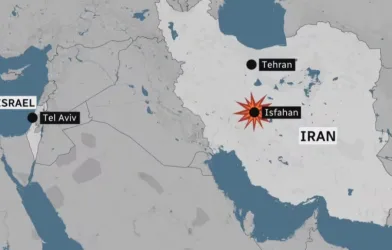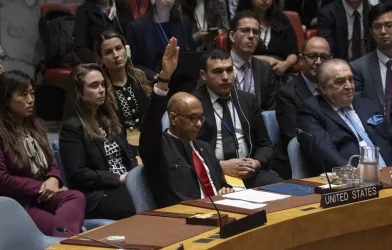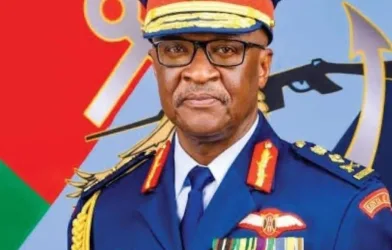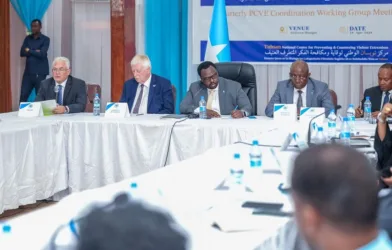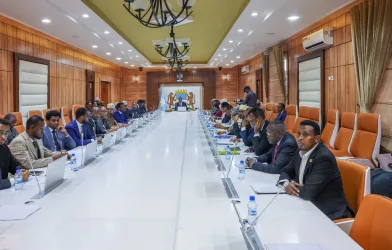The decline, decay and devastation in Mogadishu together with the fear, brutality and loss suffered by the urban population of the city is a wound that has been festering for over two decades.
By Cusmaan Cumar (cusmaancumar@gmail.com)
Many sections of the city remain devastated.
Mogadishu (Xamar) used to be a mosaic city. Somalis of every clan and from every corner of the country or the Horn of Africa had made their home in Xamar. Indians, Yemenis, Omanis, Pakistanis, Italians and some other nationalities used to complement its diverse communities. It was the pearl of the Indian Ocean. It was the beacon of the Horn of Africa. But its beauty, elegance, and impressive boulevards and villas with bougainvillea and colourful hibiscus flowers are all gone save few patchwork of haphazardly developed sections and anarchically scattered along some parts of Makkah Al-Mukkarrama Avenue and its vicinity. Not to mention the complete loss and disappearance of almost all historic landmarks including Arabesque, Turkish and Italian architectures.
National Theatre, built in 1967 in Mogadishu
Now many streets and residential areas are defined as battlegrounds. A forlorn devastated city whose multicultural and multi-ethnic residents fled in the 1990s with many abandoning the intention and desire to come back, reclaim their properties and resettle. Those who want and are prepared to repossess their own properties have been encountering ceaseless and intentional bureaucratic delays, debilitating corruption, conning and manipulations, bribery, intimidations and the likelihood of assassination. Evidently many had given up entertaining that dream. And rightly so.
Hotel Curuba (Al-Uruba) Once a major landmark in the city
The status of Mogadishu awaits the outcome of future constitutional review by the two houses; the House of the People and the Upper House of the Federal Parliament (Box 1). Being the seat of the current government is now a temporary matter. To rebuild Mogadishu and restore to its former glory is an impossibility. What is more complex and politically charged is the status that the city will have to take in the Federal Republic of Somalia. This is very crucial in the state-building process in order to deliver positive political good shared by all Federal States of the Federal Republic of Somalia – a relocation and division of the main government organs among other cities in the federal states.
Box 1: The article in the constitution about the capital city.
| Article 9. The Capital City of the Nation The status of the capital city of Somalia shall be determined in the constitutional review process, and the two houses of the Somali Federal Parliament shall enact a special law with regards to this issue. |
A significant portion of the Somali population have lost any confidence in living any ward of the city after the clanocide and the targeted evictions of over hundreds of thousands of its residents in 1991. Many of those residents had been in Mogadishu for over three to four generations. Many have resorted and regrouped into their so called place of origin or autochthonous regions. It had been extremely disheartening and tearful for these former residents of Mogadishu to have found themselves entirely uprooted. Many of these residents had known and believed that Mogadishu was the only place they had belonged. The city was their identity, their existence, and their soul. Not anymore now. And probably not in the near future or forever.
The movement and settlement of all Somali clans in Mogadishu over centuries since its foundation by the Ajuran Sultanate in the 13th century dwindled after the collapse of the central government in 1991. Mogadishu is no longer a national capital city for all Somalis. It has rather been developing into a clan enclave. It is imperative that multiple capital cities for Somalia are established. Mogadishu cannot symbolise the Somali national identity anymore.
Throughout history, capital city relocation has been done many times; from ancient Egyptian to Romans and the Chinese. In modern history there are notable capital moves. See table1. In addition, in modern times, there are number of countries in the world with multiple capital cities (Table 2).
Table 1. Some capital cities relocations in modern times
| Country | New Capital city | Old capital city | Year of relocation |
| Belize | Belmopan | Belize City | 1970 |
| Canada | Ottawa | Toronto/Quebec city | 1857 |
| India | New Delhi | Kolkata | 1947 |
| Kazakhstan | Astana | Almaty | 1991 |
| Nigeria | Abuja | Lagos | 1991 |
| Russia | Moscow | St. Petersburg | 1918 |
| Tanzania | Dodoma | Dar es Salaam | 1970 |
| Turkey | Ankara | Istanbul | 1923 |
Table 2. Some of the countries with more than one capital at present
| Country | Capitals | Functions |
| Benin | Cotonou | Seat of Judicial bodies |
| Porto-Novo | Seat of legislature (parliament) | |
| South Africa | Cape Town | Legislative seat |
| Pretoria | Executive capital | |
| Bloemfontein | Judicial capital | |
| Netherlands | Amsterdam | Constitutional |
| The Hague | Legislative and Judiciary | |
| Chile | Santiago | admin and Judiciary bodies |
| Valparaiso | Seat of the national legislature | |
| Tanzania | Dodoma | Official and legislative capital |
| Dar es Salaam | Seat of judicial bodies |
With two or three cities in different regions of the country, be it Garowe, Baydhabo and Jowhar, or, Hargeysa, Bosaso and Kismayo, or, Beledweyne, Berbera and Galkacyo, as government base, the power and resources could be distributed evenly instead of focusing on one location which is beyond salvage and resuscitation now. Moreover, it would be a fresh start for these would be capital cities rather than trying in vain to reconstruct Mogadishu physically and support it psycho-socially.
The relocation of the capital city and distribution of the organs of government to smaller towns not only accelerate and spur development but tend to have more balanced urban system. Surely concentrating power in a single city is irreconcilable with any nation just recovering from the misery of a civil war. The way forward is moving the capital city from Mogadishu and allocating the three government organs – executive, legislative and judiciary into three different towns in three different federal states of the nation. The sooner the better.


